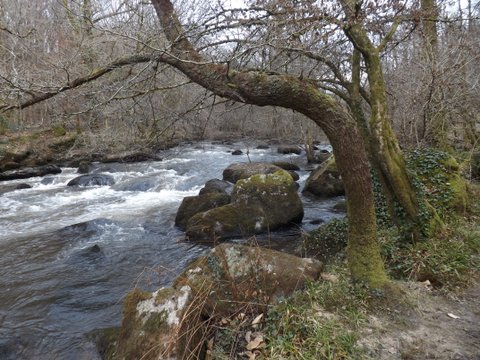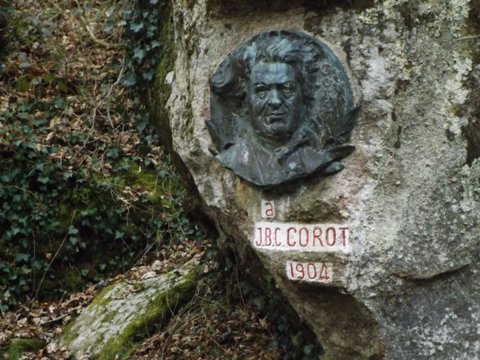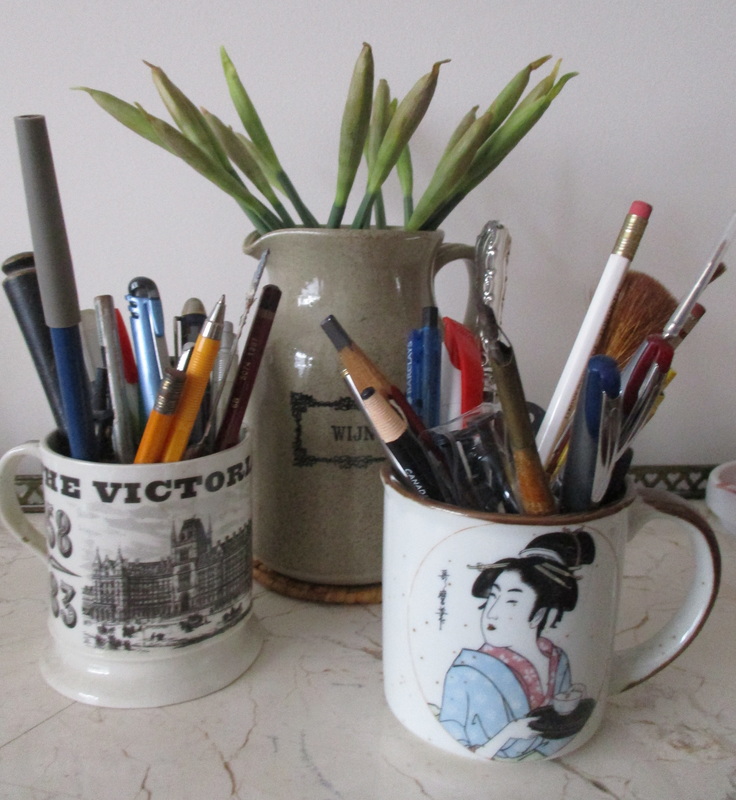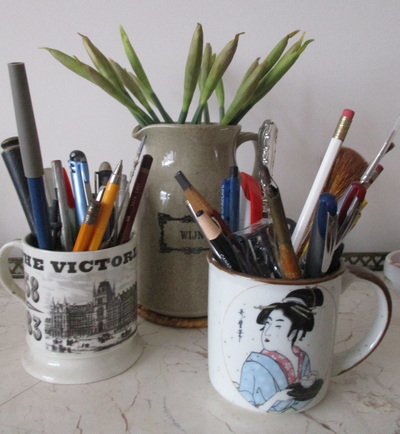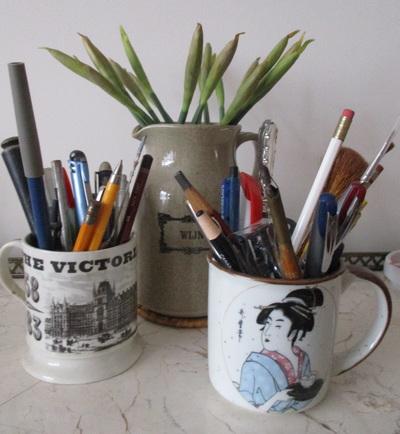|
Camille Corot 1796 - 1875 On a recent trip to France I had the pleasure of walking through a ravine called the Corot trail where followers of the artist identified landscape that was inspirational to him. Corot, influenced by Poussin, painted supremely classical landscapes with mythological figures – cool, detached, lofty; but later he moved into a freer, sensual and poetic style. He was the later Nineteenth Century’s painters’ painter, revered by the Impressionists and known as’ Papa Corot’.
He came from a comfortably-off bourgeois background - his father a Parisian wig-make (later a cloth merchant) his mother a fashionable milliner in Paris; Camille never lost his respect for their exacting manners or his pleasure in their company. They could afford a good education for him albeit at boarding schools from a very early age so that he seems to have suffered some emotional underdevelopment. He tried to please them by becoming a draper but, by his teens, his heart was already in painting. He longed to break free. Unlike so many of his artist friends (he was popular with his contemporaries) he never had to scramble for a living. In his mid- twenties, after the sudden illness and death of his only sister, his parents blessed his ambitions and gave him the income from her dowry as an allowance. So, although his fame and his own material wealth only came late in his career, he was always just comfortable enough. He never married but was not, as Ian Nightingale puts it in his book Corot, ‘impervious to feminine charms’ and did fall in love with one of his mother’s seamstresses. Marriage would have been too much of a distraction and Corot was entirely dedicated to his art - always working long hours en plein air whenever possible. In his youth he was familiar with red light districts both in France and Italy – and although appreciative of sensual pleasure was mindful of the costs. He was a kind and considerate man - deeply religious: everyday he would read Thomas a Kempis’ The Imitation of Christ and throughout his life carried out many acts of charity to his fellow artists. While browsing biographies and picture books I found a gem – an old biography from 1908. Old biographies are so interesting in style and approach. While the authors may be outdated and unreliable, they were often living much closer to the time of their subject and interesting material is to be gleaned from their work. If you saw the recent Television programme on Van Gogh’s Ear you may recall the art historian, Bernadette Murphy, finding crucial clues in old biographies. Everard Meynell’s Corot and His Friends presents a Corot who is too pure by half – no mention of the brothels here. On the other hand Meynell brings some Edwardian colour to the description of Corot’s time in Rome where he and his friends (mostly younger artists) would gather in the evening after a long day’s painting to enjoy company and food at a café called Il Lepre – The Hare – which was popular for its low prices and inventive chef. Corot was known for his singing – he sang at the easel, he sang at home (often to the discomfort of his neighbours) and no doubt he sang at these evening meetings that were so important to the development of the artists' ideas about their work. Meynell writes, “It (Il Lepre) was the chief dining-place of the youth of the studios, and its proprietors were not without a sense of the spirit of their customers. If the young Romanticists came to their tables with the gleam of a crimson sash at the waist and swung athwart their chairs the swaggering folds of a Spanish cloak, they, the proprietors, on their part brought colour and a strain of rarity to the carta. The cuoco even experimented with roast parrot, and found pleasure and fame in the exotics of the saucepan.” (Page 42) Meynell says that Il Lepre, on the Via Condotti near the Piazza di Spagna, was still in existence when he wrote in the early years of the twentieth century...and that Thackeray used it in one of his novels – which makes me think about the importance of cafés in the life of artists and writers. It takes a certain kind of patron to tolerate or enjoy these colourful and no doubt troublesome customers. (How many bars can you find which are named after or associated with Hemingway?) But for the moment my interest is caught by the biographer Everard Meynell – one of the eight children of Alice and Wilfrid Meynell, who together formed a nexus of the Edwardian London literary world. I have long wanted to write about Alice and her sister, the military painter, Elizabeth Butler. A book on the Meynells for at least three generations is surely long overdue. They will be the subject of my next blog. ©Victoria Manthorpe 2016 Photographs courtesy Peter Jamieson |
Victoria Manthorpeauthor and feature writer Blog
Your email will only ever be used to send you new posts and you can unsubscribe at any time. For more information, please check Victoria's privacy statement.
Archives
April 2024
Categories
All
|
